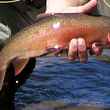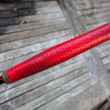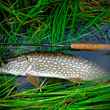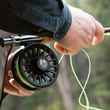Last week, officials again cut the expected returns of B-run steelhead. The current forecasted number of B-run steelhead (steelhead over 31 inches) is now only 10,700 fish, which represents only around one-third of the originally expected 31,600 fish. Only around 2,500 of the currently forecasted returning fish are expected to be wild.
In response to the reduced forecast, officials in Idaho have cut the steelhead bag limits on the Clearwater River and its tributaries accordingly. The Clearwater is the primary destination of most B-run steelhead entering the Columbia. Normally, anglers are permitted to take three steelhead per day. This year, however, anglers will be permitted to take only one steelhead per day.





























